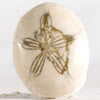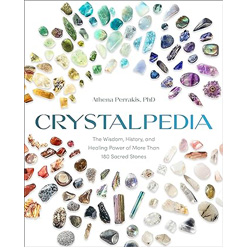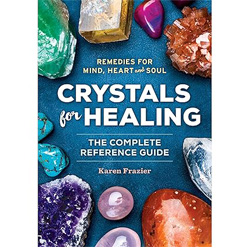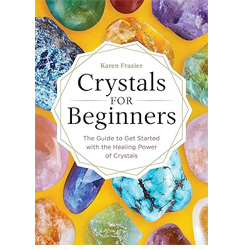- Jewelry
- Inspiration
- Our imagination
- Birthstones
- Celebrating with Eternal Flowers
- Druids and druidesses
- Flower meanings
- History, archeology jewelry
- History and healing properties of metals
- History and healing properties of stone
- Illumination jewelry
- Japanese symbols
- Maya calendar jewelry
- Stone color symbolism
- Stones catalogue
- Wedding anniversaries
- Searches a theme on the site
- Good Deals
- Paintings
- About
- Contact
JEWELRY
- Anklet
- Bracelets
- Brooches
- Cufflinks
- Earrings
- Pendants & Necklaces
- Rings
- Draw your jewelry
- How to clean your jewel
- Metal we used
INSPIRATION
- Our imagination
- Birthstones
- Celebrating with Eternal Flowers
- Druids and druidesses
- Flower meanings
- History, archeology jewelry
- History and healing properties of metals
- History and healing properties stones
- Illumination jewelry
- Japanese symbols
- Maya calendar jewelry
- Stone color symbolism
- Stones Catalogue
- Wedding anniversaries
- Searches a theme on the site
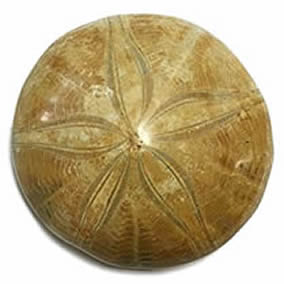
Fossil urchin: history, healing properties and lithotherapy
Properties of the fossilized sea urchin

Sea urchins, also known as echinoids or echinids, are fascinating members of the class Echinoidea, evoking enigmatic creatures from the ocean depths. These invertebrates have a rounded body covered in spines, earning them the evocative nicknames "sea hedgehogs" or "sea chestnuts."
The term Echinoidea originates from the Greek Echinos, meaning "hedgehog," reflecting the striking resemblance between these marine animals and their terrestrial counterparts.
Having emerged in the late Ordovician period, around 450 million years ago, sea urchins have endured through the ages, evolving and diversifying in form. Today, they include nearly 1,000 species across more than 70 families. Despite this variety, all share a common structure: a calcareous test composed of interlocking plates, which forms their external skeleton. In modern species, this test is covered with movable spines used for protection and locomotion. When a sea urchin dies, these spines fall off, leaving only the test, which can, under certain conditions, fossilize and persist through the ages.
One of the distinctive features of fossilized sea urchins is the star or floral pattern that adorns their test. This motif, often well-preserved in fossil specimens, is not merely decorative—it corresponds to the imprint left by the animal’s water vascular system.
The water vascular system is a complex network of internal canals and pores through which tube feet extended—small flexible appendages used for locomotion, respiration, and feeding. In certain fossil species, particularly irregular urchins like Micraster, these pores were arranged in five radial lines, forming a perfectly symmetrical star. This structure, characteristic of all echinoderms, is a remnant of their five-part body organization, a symmetry also found in starfish. Over time, and through the process of fossilization, these patterns can become more pronounced, appearing as delicate engravings on the test’s surface.
Their floral-like shapes have often inspired collective imagination: some ancient civilizations saw them as imprints left by sea deities, while others regarded them as lucky charms, symbols of protection and renewal. In certain cultures, these fossils were even called "thunderstones," as people believed they fell from the sky during storms.
Among the many fossilized sea urchin species, the genus Micraster holds a special place in the collection we present. It thrived during the Cretaceous period, around 145 million years ago, before disappearing in the Paleocene, about 55 million years ago.
Recognizable by its ovoid and slightly flattened shape, Micraster stands out with a contour that subtly evokes a heart. This distinctive feature, combined with the star pattern on its test, gives it an almost poetic appearance, as if nature itself had sculpted a symbol of harmony and resilience. Its pronounced central groove further reinforces this impression, making some specimens resemble relics imbued with history.
Living primarily in soft marine sediments, Micraster partially buried itself in the seabed, leaving only the tip of its test exposed. This adaptation allowed it to evade predators while filtering nutrient-rich particles from the water. Today, its fossils are primarily found in Cretaceous limestone formations, providing geologists and paleontologists with valuable insights into the evolution of marine environments from that era.
History, beliefs and legends about the sea urchin
Since the earliest days of human history, the fascination with fossilized sea urchins has been undeniable. Their presence in funerary offerings dates back to the Paleolithic era and persisted at least until the 12th century AD.
The most famous example remains that of the Dunstable Downs in England, where a Bronze Age tomb was uncovered, containing the remains of two women alongside more than 200 fossilized sea urchins. This burial site belongs to the Middle Bronze Age (approximately 1600–1400 BC), a period characterized by complex funerary rites and the use of symbolic objects to accompany the deceased into the afterlife. The impressive number of fossilized sea urchins found in this tomb suggests a strong symbolic significance, possibly linked to beliefs in protection, fertility, or the transition to the beyond.
In Judea, the remarkable fossilized spines of certain sea urchins, such as Balanocidaris, exhibit a shape reminiscent of a golf club, closely resembling the human bladder. These fossilized spines, known as lapis judaicus or "Jew’s stone," were highly valued for their supposed medicinal properties, particularly in treating urinary ailments, including kidney stones.
Their use dates back to ancient medical traditions in Judea, where these fossils were incorporated into a body of knowledge passed down since antiquity. In a context where medicine, symbolism, and belief were closely intertwined, the lapis judaicus was not only considered an effective remedy but also a protective talisman. Its unusual shape and distant origin endowed it with a mystical aura, further enhancing its reputation among local populations.
It is widely believed that during the Crusades, these spines—or their fragments, ground into powder or incorporated into ointments—were brought to Europe by pilgrims and soldiers who had traveled to the Holy Land. In the medieval period, marked by a relentless quest for remedies derived from ancient knowledge and folk traditions, the lapis judaicus quickly found its place in European pharmacopoeia. Contemporary medical and pharmaceutical treatises mention it, emphasizing its therapeutic properties and widespread use in treating urinary disorders.
Moreover, the provenance of these fossils, directly tied to a region steeped in biblical and legendary history, granted them an almost magical status. As a result, they were often associated with protective rites and healing practices, perfectly illustrating how cultural and religious exchanges—particularly during the Crusades—facilitated the transmission of medical knowledge and enriched therapeutic practices across Europe.
It is in Greece that the enduring fascination with sea urchins finds one of its oldest roots. Aristotle, in his timeless work The History of Animals, written around 343 BC, provides a valuable description of the anatomy of these fascinating marine creatures.
In this treatise, Aristotle examines the morphology of marine animals and devotes several passages to echinoids. For instance, in Book VIII, Chapter 3, he describes the orderly arrangement of their spines and the overall structure of these organisms, emphasizing the complexity and harmony of their form. This meticulous observation not only reflects the scientific curiosity of antiquity but also highlights the importance these creatures held in understanding the natural world. Aristotle’s writings, particularly these passages, allowed future generations to develop a detailed image of sea urchins, contributing to their legend and symbolism across various cultures.
Within the rich fabric of Celtic beliefs, fossilized sea urchins were perceived as serpent eggs, a precious essence whose value rivaled that of the legendary quest for the Philosopher’s Stone or the Holy Grail. According to Celtic cosmology, these eggs were born from the convergence of mystical energies, woven by the summer embrace of serpents, whose entwining forms mirrored traditional sacred symbols. Propelled into the air by the hissing force of the reptiles, they had to be captured before touching the ground, wrapped in a protective mantle. In the Druidic tradition, acquiring these treasured artifacts was a race against time, meant to escape the wrath of the serpents—often culminating in the crossing of a river to break their pursuit.
Celtic tales also speak of serpent eggs occasionally seen floating upstream, delicately bound by shimmering golden threads. The magic infused within these objects was believed to fluctuate with the lunar phases, revealing its full power only at precise moments. Thus, their collection was meticulously orchestrated to coincide with these phases, ensuring the preservation of their mystical potency and their connection to the primordial forces of the universe.
The bearer of the egg was said to be invulnerable to poisons, toxic vapors, and even defeat in battle, enjoying divine favor that facilitated disputes and conflicts with kings. These eggs were believed to hold the treasures and wisdom of the world.
This Celtic fascination with "serpent eggs" is mentioned by Pliny the Elder, who also recounts the supposed inefficacy of these objects through the tragic fate of a Roman who, despite carrying such an amulet, was ultimately executed by the emperor. For Pliny, these artifacts embodied the origins of the caduceus entwined with serpents, a symbol of peace and balance.
The serpent egg held a central place among Druidic artifacts, considered a sacred manifestation of the sea serpent, a creature closely linked to the vital element of water, the primordial source of all existence. According to Celtic mythology, this egg emerged from the belly of the female serpent, symbolizing the womb of creation, before being fertilized by the male, the embodiment of generative life force. This image, both phallic and terrestrial, evoked regeneration and the eternal cycle of life.
Many Celtic burial mounds, such as those of Saint-Amand-sur-Sèvre and Barjon, bear witness to the significant presence of fossilized sea urchins—silent vestiges of an ancient wisdom that regarded these objects as receptacles of vital energy.
Similar accounts can also be found in the Roman world, notably through the legend of "eel eggs" mentioned by certain ancient authors. Like the Celtic serpent eggs, these eel eggs were often associated with protective virtues and healing powers, suggesting a possible convergence or exchange of symbols between Celtic and Roman cultures. A comparative study of these myths could highlight intriguing parallels, revealing how different ancient European civilizations interpreted and integrated natural and fossilized elements into their ritual and medicinal practices.
In the rich folklore of Suffolk County, England, fossilized sea urchins—particularly species such as Micraster and Echinocorys—were affectionately known as "fairy loaves." These fossils, unearthed from the region’s ancient marine sediments, were carefully placed in bread ovens, as they were believed to ensure perfect baking, thus guaranteeing an abundance of bread for the fortunate households that possessed one.
In Sussex, the veneration of these fossilized treasures took equally poetic forms. Known by various names such as "sugar loaves," "fairy bread," "shepherds’ crowns," and "goblin helmets," these ornamental objects were placed on windowsills. They were thought to possess protective powers, capable of warding off lightning and even predicting rain. While this belief was steeped in folk magic, it may have a rational explanation linked to the fossil’s physical properties: by absorbing moisture from the air, it facilitated condensation on its surface, offering an almost scientific indication of impending rainfall.
In southern England, fossilized sea urchins served another practical purpose: they were considered talismans against milk spoilage. For farmers and housewives eager to preserve their valuable dairy supplies, these fossils provided a symbolic safeguard, ensuring that milk would not turn sour—a sign of prosperity and good fortune.
In Malta, these fossils were perceived as turtle eggs and were sometimes referred to as "Paul’s Breasts" due to their suggestive shape and the fact that they were occasionally found in pairs. This designation also reflects the broader human tendency to interpret natural forms through symbols of sexuality and fertility—a recurring theme in many Mediterranean traditions, including those of Greco-Roman antiquity. These cultures often saw reproduction and the regeneration of vital forces as allegories of life itself, so it is unsurprising that fossils, with their resemblance to organic shapes, were incorporated into rituals and beliefs related to fertility.
In Denmark, fossilized sea urchins were regarded as "thunderstones," believed to be born from the sky during violent storms. It was thought that they fell from the heavens, carrying divine energy and encapsulating the power of lightning. Strategically placed near dwellings, these fossils were revered not only for their protective power against witchcraft and the destructive forces of lightning but also for their ability to ward off malevolent influences.
Their status as divine talismans was reinforced by their association with the mighty Norse god Thor, the master of thunder. According to tradition, these mysterious stones were considered gifts from the god himself—a blessing bestowed upon the people to shield them from storms and dark sorcery. This belief was part of a broader set of ritual practices and widespread superstitions in medieval Scandinavia, where the sacred was closely intertwined with the observation of natural phenomena.
Furthermore, these fossils were believed to possess a remarkable ability to "sweat" or slightly ooze moisture, a phenomenon interpreted as an omen of approaching storms. This "sweating" was seen as a subtle warning from the elements, allowing inhabitants to prepare for meteorological dangers. Thus, beyond their protective function, these stones also served as forecasting tools, contributing to the safety and resilience of communities facing the whims of the climate.
In Provence, France, placing a fossilized sea urchin on the roof of a farmhouse was considered a good luck charm, ensuring the home's protection and prosperity. In these sun-drenched rural landscapes, locals turned to these ancient marine relics to foster an atmosphere of well-being and security around their homes.
A persistent legend tells the story of Balthazar, one of the Magi guided by the star of the Nativity toward Bethlehem. According to this tale, the wise traveler, on his sacred journey, was momentarily enchanted by the irresistible charm of a young woman, diverting him from his divine mission. To set him back on the right path, God miraculously imprinted the star’s pattern onto all the surrounding stones and rocks, giving birth to the star-shaped fossilized sea urchins. This divine intervention symbolized both celestial vigilance and the power of divine order to remind humans of their duties and restore harmony. Thanks to this sign, Balthazar regained his resolve and continued his quest, becoming a guardian of a luminous destiny.
This myth, blending the extraordinary with the everyday, perfectly captures the spirit of Provence, where nature and faith intertwine to weave stories rich in magic and symbolism. The presence of fossilized sea urchins, objects both mysterious and steeped in history, reflects how the Provençal people transformed elements of nature into powerful talismans, standing at the crossroads between the earthly and the celestial realms.
Around the city of Bagh in India, these fossils are revered under the name "Stone of Five," also known as Khada de Punchu, due to the distinctive five-pointed star pattern they bear. This symbol of five is far from insignificant within the spiritual and philosophical context of the region. In Indian cosmology, the number five holds a special place, often representing the five elements—earth, water, fire, air, and ether—which, according to tradition, constitute the universe.
These fossils, with their star-like shape, were thus interpreted as tangible manifestations of cosmic harmony and the unity of natural forces. Their presence in the landscape provided locals not only with symbolic protection but also with a direct connection to the cosmos and the eternal cycles of the elements. Through their mystical appearance, they served as a bridge between the material and spiritual worlds, helping to establish balance and serenity in daily life.
In Jamaica, the sea urchin of the Eurhodia species is venerated under the evocative nickname "Lucky Stone." Considered a bearer of good fortune and prosperity, this precious stone is sought after for its magical properties and protective qualities. Locals hold it in high regard, viewing it as a tangible symbol of luck and success in their everyday lives.
In Jamaican folklore, the "Lucky Stone" occupies a special place in rituals and traditions. It is often used in local ceremonies, where it is believed to attract positive energies and ward off misfortune. Some practitioners of traditional healing even incorporate it into their talismans and amulets, believing that its presence promotes not only material prosperity but also spiritual and emotional harmony.
On the Swedish island of Öland, cystoid sea urchins captivate with their nearly spherical shape and delicate thinness. What truly sets them apart, however, is their remarkable transformation during the fossilization process. As they undergo this metamorphosis, these sea urchins turn into true crystalline marvels. Filled with diagenetic calcite crystals, these precious fossils sparkle like natural gemstones, evoking the purity and beauty of "crystal apples."
This poetic name highlights not only their natural magnificence but also the rarity of these treasures, which result from a unique combination of geological conditions specific to Öland. The island, renowned for its exceptional sedimentary formations, provides an environment where fossilization can lead to spectacular mineral transformations, endowing these sea urchins with an almost magical radiance.
Beyond their aesthetic appeal, these fossils intrigue collectors and mineral enthusiasts worldwide, as they embody both the beauty of nature and the complexity of geological processes. For geologists, these crystalline formations also offer valuable clues about the evolution of marine environments in the region during past geological periods.
Healing properties and benefits of the fossil sea urchin
Throughout the long history of humanity, human societies have attributed various curative or symbolic properties, virtues and interpretations to fossil sea urchins. The elements presented here are part of a cultural and historical approach, intended to illustrate the particular relationship that has gradually developed between this fossil stone and human societies over the centuries. As with the previous examples, this information follows a descriptive, scientific and historical perspective. It does not constitute any form of therapeutic or medical recommendation, nor does it reflect personal beliefs.
- Far beyond their status as paleontological remains, fossil sea urchins have long been regarded as protective and symbolic objects. Their natural geometric form, shaped by a lengthy process of fossilization, has contributed to the idea of a close connection with the cycles of the Earth and the forces of nature. In several European folk traditions, they were kept as talismans and associated with stability, grounding and protection against influences considered harmful.
- In certain historical contexts, particularly during the Middle Ages and the Renaissance, fossil sea urchins were used in practices intended to respond to poisoning or venomous stings. In this framework, they were seen as symbolic supports capable of accompanying processes of bodily purification. This interpretation was based on their marine and mineral origin, which was considered a natural counterbalance to toxic substances.
- Fossil sea urchins have also been associated with the torso and the circulatory system. In some traditional interpretations, they were mentioned as symbolic objects linked to the strengthening of vital functions, especially those of the heart and lungs. Their presence was sometimes understood as favoring physical resistance, endurance and overall bodily balance, particularly in individuals exposed to prolonged physical effort.
- In the digestive sphere, fossil sea urchins are cited in ancient traditions as elements that could symbolically accompany disorders related to the stomach and the liver. They were associated with the idea of harmonious digestion and improved elimination, in connection with their marine origin and their slow mineral transformation. These interpretations belong to a holistic view of the body, in which fossils represented order and the regulation of internal flows.
- Regarding joint and muscular pain, fossil sea urchins occupy a particular place in ancient medical imagination. Their fossilized calcareous structure was often related to bones and joints. In certain traditions, they were perceived as symbolically favoring solidity, flexibility and the soothing of chronic inflammation, notably in cases of arthritis, rheumatism or muscular tension.
- Thanks to their regular shape and mineralized appearance, fossil sea urchins were also associated with the alleviation of disorders linked to the head. They were sometimes mentioned as supports thought to favor the reduction of persistent headaches, sensations of dizziness or muscular spasms. This reading was based on the idea of harmonious circulation and a calming effect associated with their presence.
- Because of their composition rich in calcium carbonate and other minerals, fossil sea urchins were sometimes included in symbolic reflections concerning bone health. In certain cultures, they were associated with the prevention of skeletal fragility and with the notion of structural solidity of the body, echoing their own process of fossilization.
- Popular traditions also mention links between fossil sea urchins and hearing. In this context, they were sometimes used as protective or symbolic objects to accompany certain imbalances related to the inner ear, listening and orientation, notions often associated with the marine element from which they originate.
- Fossil sea urchins are likewise evoked for their connection with the assimilation of certain essential nutrients, particularly vitamins A and D. This interpretation fits within an ancient worldview linking marine fossils to light, the sun and natural cycles, elements considered fundamental for metabolic balance, skin health and the proper functioning of the immune system.
- Finally, beyond bodily aspects, fossil sea urchins are frequently associated with a protective and harmonizing dimension. Their presence in a place was sometimes interpreted as fostering an atmosphere of stability, balance and symbolic protection. In this sense, they could be perceived as grounding objects, creating a feeling of safety and coherence between the individual and their environment.
 Please note that all healing properties attributed to stones come from ancient traditions and various cultural sources. This information is provided for informational purposes only and does not constitute medical advice. In case of any health concerns, it is recommended to consult a qualified professional.
Please note that all healing properties attributed to stones come from ancient traditions and various cultural sources. This information is provided for informational purposes only and does not constitute medical advice. In case of any health concerns, it is recommended to consult a qualified professional.
Fossil urchin jewelry samples
To learn more about litotherapy, we recommend you the following books:


